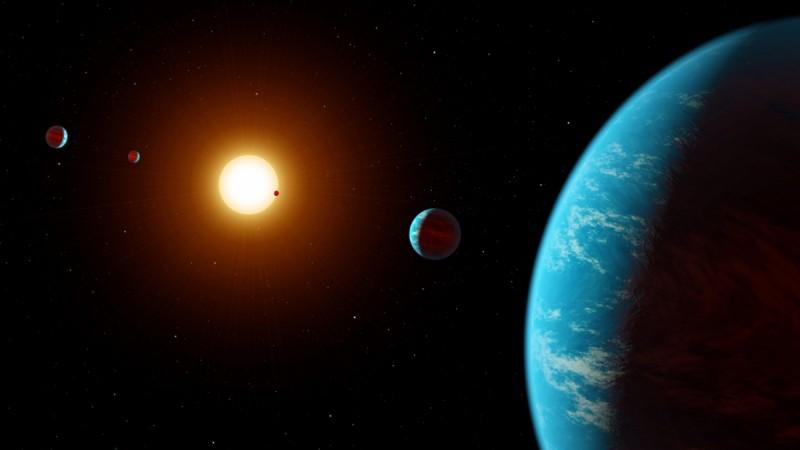
NASA's Transiting Exoplanet Survey Satellite (TESS) has discovered multiple planets outside the solar system, around 31 light-years away. These exoplanets are orbiting a star named GJ 357 in the Hydra constellation.
A study published in the journal Astronomy & Astrophysics revealed that GJ 357 is a star that is 40 percent cooler than our sun and is only about a third of the sun's mass and size.
Using TESS, scientists initially discovered an exoplanet named GJ 357 b. Experts consider this exoplanet as a Super-Earth as it is 22 percent larger and 80 percent more massive than the blue planet. This exoplanet completes its orbit around the host star in 3.9 earth days and analysis revealed that it has an average temperature of 490 degrees Fahrenheit.
Scientists stated that this exoplanet does not have the capability to host alien life due to its temperature.
However, the second exoplanet discovered by scientists named GJ 357 can be considered as a potential candidate to find alien life, as it lies in the outer edge of the star's habitable zone.
Experts speculate that this exoplanet, which is 6.1 times more massive than the earth, could have the right conditions to support liquid water on its surface.
"GJ 357 d is located within the outer edge of its star's habitable zone, where it receives about the same amount of stellar energy from its star as Mars does from the Sun. If the planet has a dense atmosphere, which will take future studies to determine, it could trap enough heat to warm the planet and allow liquid water on its surface," said Diana Kossakowski, a researcher who works at the Max Planck Institute for Astronomy and the co-author of the study, Science Daily reported.
Researchers also said that the temperature in this Super-Earth could be negative 64 degrees Fahrenheit. Lisa Kaltenegger, study author and an associate professor of astronomy and director of Cornell's Carl Sagan Institute, revealed that signs of alien life could be discovered from GJ 357 d in the coming years using advanced telescopes.
GJ 357 c, the third exoplanet discovered is located in between GJ 357 b and GJ 357 d. GJ 357 c has 3.4 times the mass of Earth and a temperature of 260 degrees Fahrenheit.

















